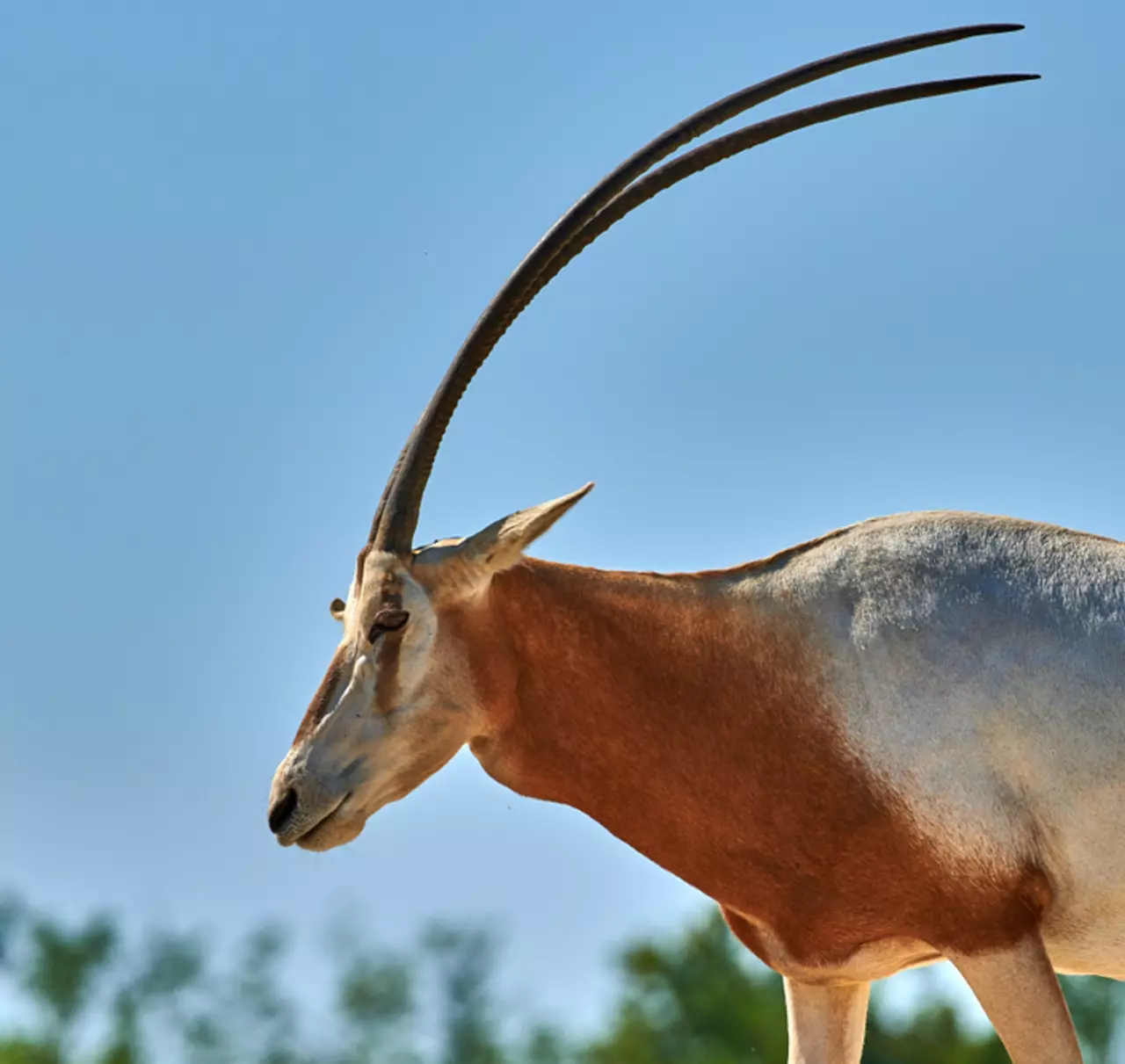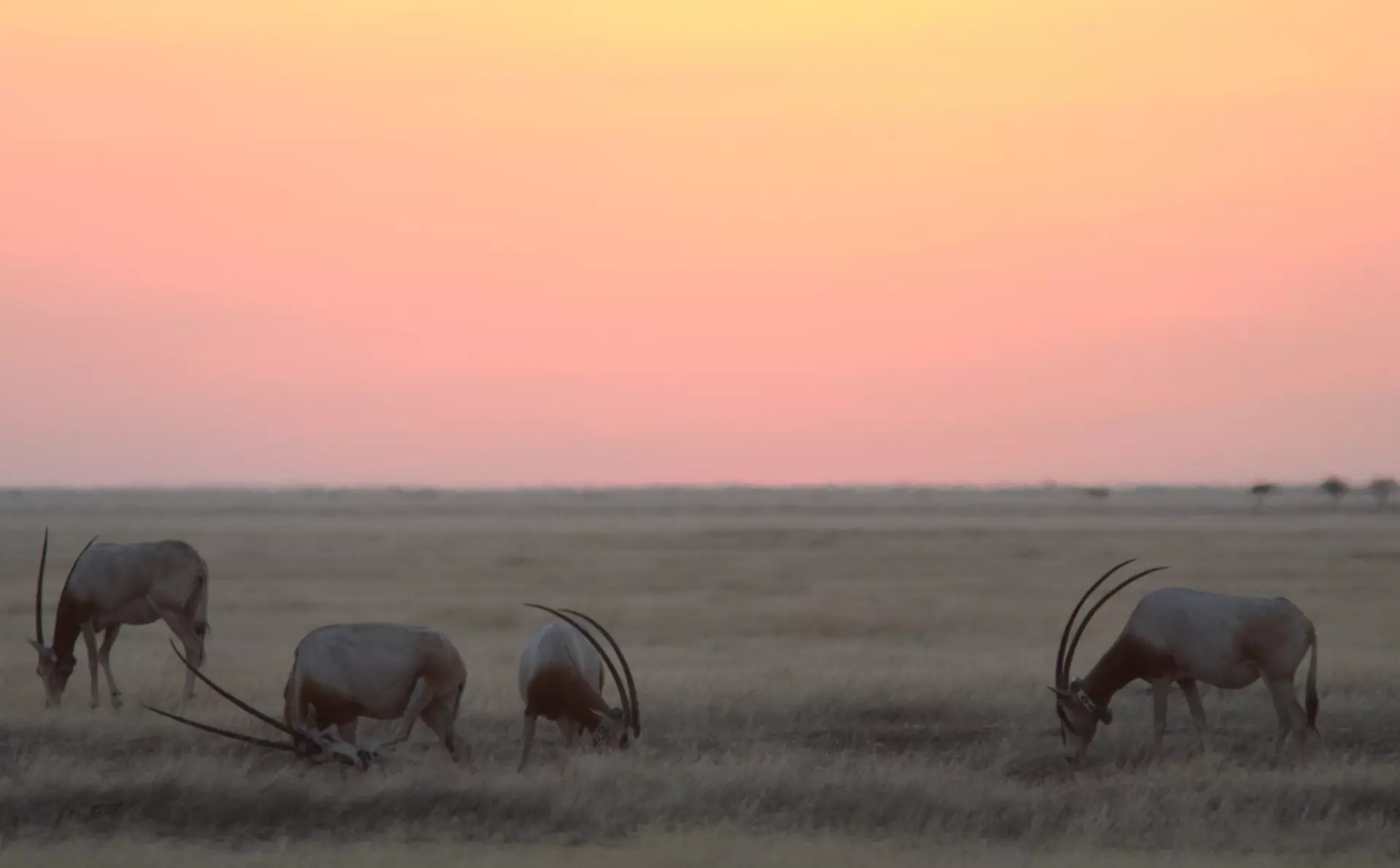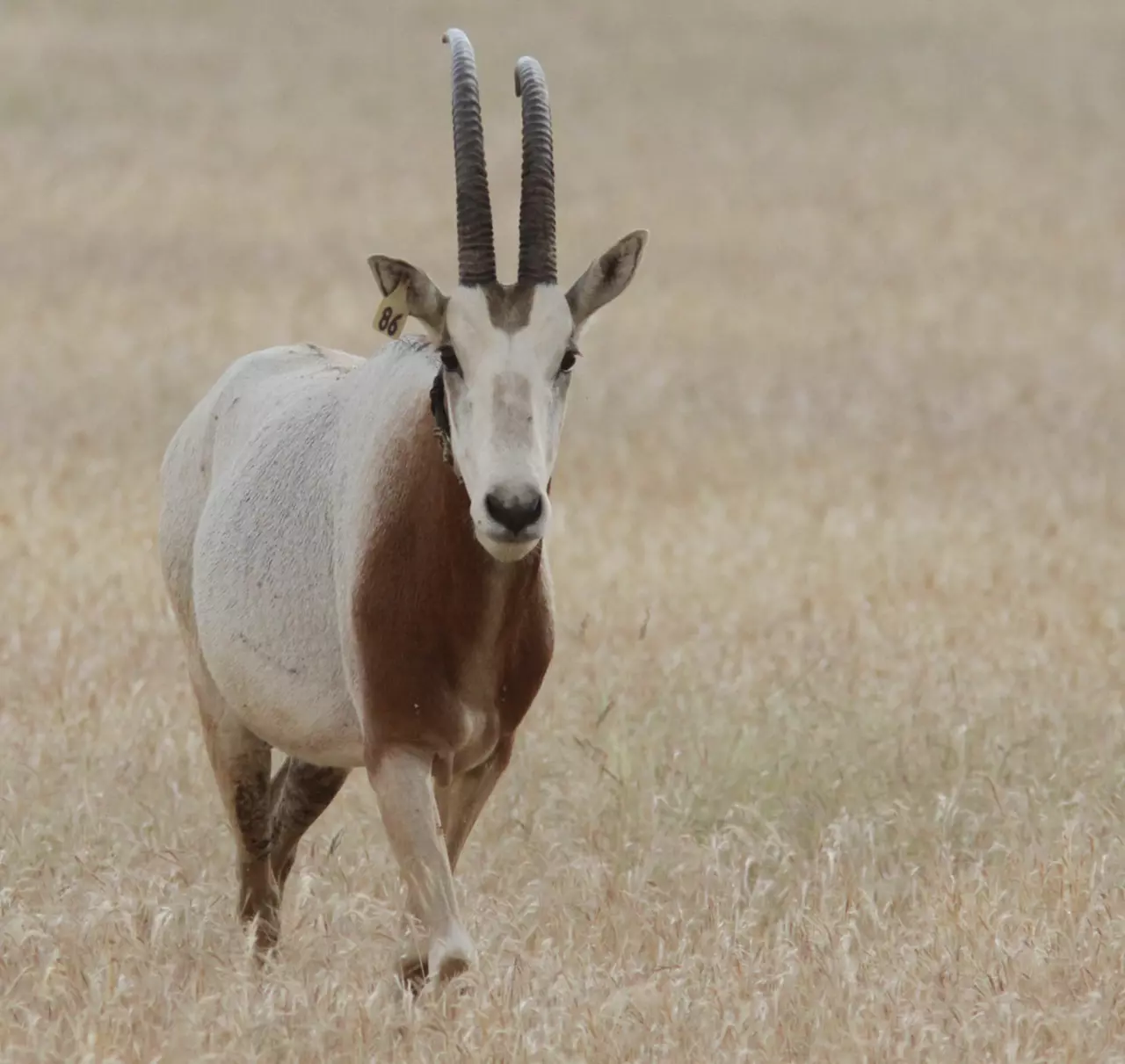Scimitar Horned Oryx Brought Back From Extinction

The Scimitar Horned Oryx has been partially restored in parts of Africa, as described in the article below.
Quoting the article, “The remarkable comeback of the scimitar horned oryx represents the restoration of not just a species, but a whole ecosystem through the role they play in it. Maintaining grasslands in their native Chad through grazing and preventing the spread of desertification – their reintroduction is a nature-based solution helping to tackle the local impacts of climate change.”
“We know that if we are to truly tackle the issues facing our planet then we must stop treating biodiversity loss and climate change as two separate threats – you cannot solve one without the other.”
Although they are not mentioned in the article, Texas ranchers and conservationists, at their own expense without without public funding, have long maintained private stocks of the threatened oryx, and many other African species. In fact, there are free ranging oryx populations in small areas of South Texas. These have been used as sources for restoration efforts.
NOTE: this article was originally published to ZSL.org
Scimitar horned oryx downlisted to endangered by IUCN – marks first species in global Extinct in the Wild initiative to be downlisted
An antelope whose species was declared Extinct in the Wild has today been downlisted to endangered – the direct result of a globally coordinated effort supported by our international conservation charity.
The scimitar horned oryx, (Oryx dammah), also called the Sahara oryx, was once widespread across North Africa, but in the 1980’s the population began to plummet – largely due to the antelopes being hunted for their horns and meat. In 2000, the species was declared Extinct in the Wild by the IUCN Red List.
Today, thanks to a conservation partnership coordinated by the Environment Agency of Abu Dhabi (EAD) which we support, its fate has been reversed – the first species from our Extinct in the Wild global initiative to be downlisted.


The EAD coordinated global conservation organisations to reintroduce the scimitar horned oryx, which since the launch has seen 510 scimitar-horned oryx calves born in the wild in Chad.
The IUCN Red List downlisting recognises the successful establishment of the self-sustaining population which now thrives within Chad’s Ouadi Rimé, at the Ouadi Achim Faunal Reserve – with animals from leading conservation zoos – including Whipsnade Zoo – contributing to the founding herd.
In February 2023, our scientists published a study showing that conservation zoos have the powerful potential to reverse extinction. Published in the Journal Science – the world’s leading outlet for cutting edge science – the research was the first to comprehensively evaluate the 95 extinct in the wild animals and plants that since 1950 have only survived in human care. The scimitar horned oryx is the first species evaluated in the study to subsequently have its status downlisted to endangered.


Dr Andrew Terry, our Director of Conservation and Policy and co-author of the study said: “At a time when biodiversity is being lost at unprecedented rates, the return of the scimitar horned oryx can give us hope for other species whose fate is – quite literally – in our hands.
“The Extinct in the Wild global initiative recognises the vast collaborative efforts of zoos, aquariums and botanic gardens – working alongside governments and partners responsible for wild habitats – to prevent the extinction of species such as these. To have the fate of the flagship species for the initiative dramatically reversed proves the potential for the other species surviving only in zoos and reinforces the need for urgent support from funders and policy makers.”
Recognising the plummeting wild population, an ambitious recovery project was started in 1985 where we worked alongside organisations including the Sahara Conservation Fund (SCF) to carry out early feasibility studies to ensure any reintroduction stood the best chance of success. One of several global partners providing key support, we have continued to provide scientific and conservation support to the reintroduction programme since.

Acknowledging that the scimitar horned oryx’ comeback was not an overnight success story, ZSL’s senior conservation biologist Tim Wacher, who has supported the post-release monitoring of the oryx population, said: “The return of the scimitar horned oryx is the result of a long-term conservation effort for the species – following in-depth, careful preparation, and championed and supported by the Environment Agency of Abu Dhabi.
“All Saharan antelope species are severely threatened, but this project is proof that with the right will and resources, we can secure a future for them all.”
Professor John Ewen, researcher at our Institute of Zoology and senior author of ZSL’s Extinct in the Wild study, said: “The success of the globally coordinated conservation effort to restore the Scimitar horned oryx to Chad demonstrates the power of collaboration, but each Extinct in the Wild species is unique in how secure it is from extinction and what is needed for reestablishment of wild populations, so saving them requires specific actions tailored to each species.
“Projects like the Scimitar horned oryx show that reversing the fate of these species is possible – we just need to be able to give the same resource and commitment to the other Extinct in the Wild species that survive only under human care.”
The remarkable comeback of the scimitar horned oryx represents the restoration of not just a species, but a whole ecosystem through the role they play in it. Maintaining grasslands in their native Chad through grazing and preventing the spread of desertification – their reintroduction is a nature-based solution helping to tackle the local impacts of climate change.
Dr Terry concluded: “At ZSL, we know that if we are to truly tackle the issues facing our planet then we must stop treating biodiversity loss and climate change as two separate threats – you cannot solve one without the other. As globally important discussions conclude at COP28 this week, we must take a moment to celebrate this huge conservation success and use it to galvanise world leaders to drive future change and success.”
—
For more posts like this, in your inbox weekly – sign up for the Restoring Diversity Newsletter
